In culinary school and in all the restaurants I worked in, I was taught to roast beef tenderloin. However, with my barbecue roots, I couldn’t help but test out smoking recipes for beef tenderloin on Traeger.
Finally, I have got the rub, smoking temperature, and other tricks and techniques down pat. I would now like to show you how to recreate this recipe to perfection!
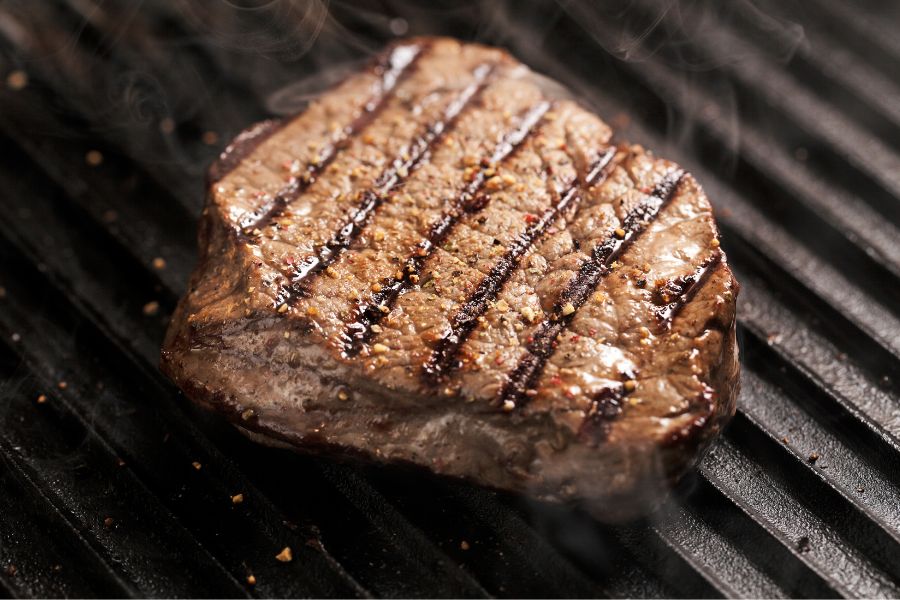
The key to great tasting Traeger smoked beef tenderloin is to ensure that you are using your Traeger grill just right.
Once you have loaded in your wood pellets, it is time to start up the Traeger. If you have an older model, then you will need to follow the instructions to start the machine up with the lid open. Newer models have a faster startup method with the lid closed.
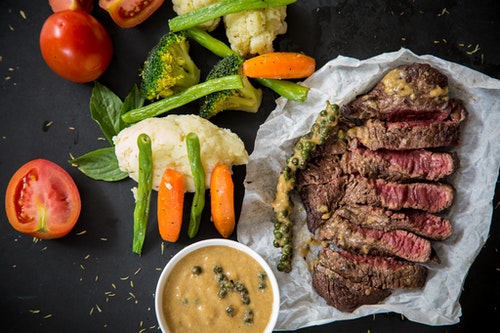
Now, when first setting up the Traeger, you will do so in the Smoke setting. Once the pellet grill has warmed up sufficiently, then you can increase the temperature to something higher.
This is usually recommended. The Smoke setting on the Traeger pellet grill smokes at temperatures between 180 degrees F and 200 degrees F. This is often too low, particularly for cuts like the Traeger smoked beef tenderloin. Thus, it is best to select a slightly higher temperature to ensure that the meat cooks faster.
Related Reading
Beef tenderloin may be a truly succulent and prime piece of meat, but it still needs to be trimmed before it is smoked.
You will need to begin by removing the silver skin from the top of the tenderloin. You can use a boning or filet knife for this. With a tenderloin, you are going to see a tapered and a fat end. Then, running alongside this cut, you will also see a narrow strip of meat. This is only loosely attacked to the beef tenderloin.
Grab the portion of the chain that is at the closest to the tapered end. Then, pull it up, separating it from the rest of the beef tenderloin as you go. Once you come to the end, use your knife to snip it and remove it.
Next, you have to remove the connective tissue. This is the thick white skin over the beef tenderloin. Slide your knife just below this level and trim it off. As you do this, make sure not to cut off any of the actual meat attached to the beef tenderloin. Always angle the knife slightly away from the meat.
Snip the connective tissue off and then move onto the excess fat. Make sure to get the tissue and fat in the fat end of the beef tenderloin as well.
Once it has all been trimmed, you will realize that your beef tenderloin is most likely wider on one end and narrower on the other. To ensure an evenly smoked beef tenderloin, you may want to slice this cut of beef into two sections that of a similar shape and size.
Related Reading
There is no denying that beef tenderloin is one of the most tender pieces of meat – after all, the filet mignon is cut from here! Due to this, you may imagine that this cut of beef doesn’t need any kind of brining – a brine is meant to make the meat softer.
Well, what beef tenderloin has in texture, it can lack in flavor unlike the prime rib. A dry brine is a great way to add flavor to this cut without overwhelming the natural flavor profile of the meat.
Of course, it is entirely up to you – some people prefer to simply season the beef tenderloin right before throwing it on a hot grill. You can try both options to determine which one serves you best.
Take out the beef tenderloin up to 30 minutes before smoking and get it close to room temperature.
Tie butcher’s twine around the length of the beef tenderloin, maintaining an even distance between each section.
If there is a thinner tail end of the tenderloin, then tuck this under and tie twine around to ensure that the meat is the same thickness from one end to the other.
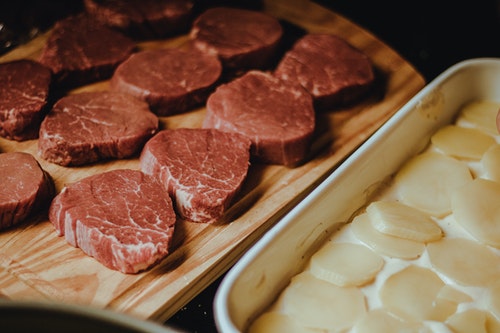
Combine the ingredients of the beef rub in a small bowl and set aside.
Sprinkle the rub over the whole tenderloin liberally.
Preheat the Traeger pellet grill.
Set the temperature to 225 degrees F.
Place the beef tenderloin on the hot grill grates and close the lid.
Cook until the internal temperature reaches 125 degrees F for medium rare or 135 degrees for medium doneness.
Turn the pellet grill to high. Grill the smoked beef tenderloin on each side until the internal meat temperature reaches 135 degrees F for medium rare or 145 degrees F for medium doneness.
Take the smoked beef tenderloin off the grill and let beef rest for 15 minutes before slicing into thick slices. Serve immediately.
Related Reading
You will have probably noticed that filet mignon is often paired with some kind of compound butter. This is because, on its own, beef tenderloin has a milder flavor. A herb butter can make up for this without overpowering the natural flavors of the smoked beef tenderloin.
Want to make some yourself? Well, here is the recipe:
Combine all the ingredients thoroughly in a bowl. Cover and refrigerate until you wish to serve.
Once the Traeger smoked beef tenderloin is ready to serve, place a tablespoon or so of butter atop each slice.
If you would like a fancier presentation option, scoop the herb butter in silicone molds and refrigerate. Then, place this on top of the smoked beef tenderloin.
The key to a beautifully smoked beef tenderloin is choosing the right cut for your meal. The two major options for smoking is either the center cut or tail-end.
For a smaller group, the center cut works just fine. I like this part as it has a more regular shape making it easier to smoke evenly.
In case you are feeding a larger crowd, then the tail end beef tenderloin will make more sense. As it doesn’t have a regular shape, you will need to tie it at intervals to ensure a more even thickness.
Now, you will be able to choose a trimmed or untrimmed cut of beef tenderloin from your butcher. The trimmed version is often more the more expensive cut. If you want to save a few dollars, then do the trimming by yourself. On the other hand, if you would rather save yourself the hassle, then get the trimmed cut.
As you will see from the recipe, I have kept my rub ingredients quite simple – kosher salt, fresh cracked pepper, and garlic powder. I have found that this is the best combination for flavoring the beef tenderloin without overpowering its flavor.
Of course, you are free to get as fancy with this mix as you want. I know that there are lots of people who prefer a more BBQ orientation and will make up a rub with brown sugar, smoked paprika, cumin, onion powder, etc.
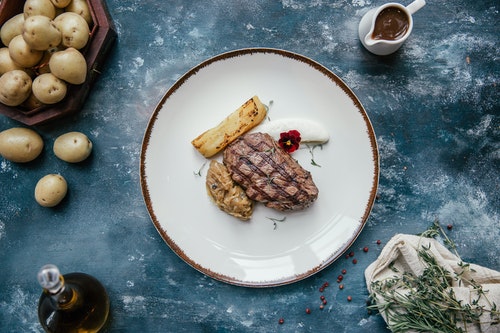
If you aren’t sure of what you will or won’t like, it is a good idea to experiment with smaller cuts of tenderloin. Try a few different combinations to discover what works for you best.
Start by applying the ingredients to a small portion of the tenderloin. If you find that they keep falling off, then dust it off and then apply a thin layer of cooking oil to the cut.
This will act as a binding agent. Remember not to use too much, though. Instead, dip a pastry brush in a little bit of oil and paint a thin layer. Then, sprinkle the spices on.
A lot of people are curious as to how long they should let the rub sit on the meat for. Some people will do this for several hours while others will smoke the meat immediately.
I would say that there is no right and wrong answer. Instead, it is about which method is easier for you to work with.
If you are planning on letting the ingredients sit on the beef tenderloin for many hours, though, make sure to keep it in the refrigerator for this period.
Related Reading
As you are probably aware, beef tends to have a robust beefy flavor to it which is why you tend to have more options when choosing wood pellets. However, when it comes to beef tenderloin, you do have to be a bit more careful.
As I have already mentioned, beef tenderloin isn’t as strongly flavored. Due to this, I find that more potent woods like hickory and mesquite aren’t the greatest option here. Not only can they overpower the natural flavors of the meat but they can also make it taste slightly bitter.
For a milder smoke flavor, I would suggest oak. It still offers up that smoky flavor without adding anything too strong to the smoked beef tenderloin.
At the same time, you can choose to go sweeter too. Fruitwoods such as cherry, apple, or even maple work well for that mild flavored beef tenderloin.
Before I discuss the smoking process of beef tenderloin, I do want to talk about searing or reverse searing the Traeger smoked beef tenderloin.
Searing refers to the process where you briefly cook the meat over extremely high heat. This is typically done at the beginning of the cooking process. Then, you go onto turn down the heat and cook or smoke the meat at a lower temperature for the rest of the time.
The reverse sear, on the other hand, is when you sear the meat at the end of the cook time.
Personally, for smoked beef tenderloin, I prefer the reverse sear method. This is because it gives me a bit more control over the internal temperature and I feel that the meat absorbs the smoke a bit better.
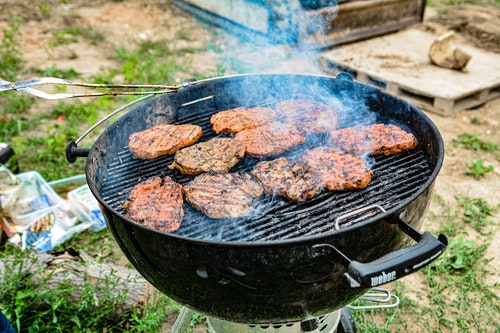
You are free to do it the other way around, if you wish.
In case you want to reverse sear your smoked beef tenderloin as well, remember to stop smoking the meat about 10 degrees or so before it is done. Otherwise, you will end up overcooking the meat. In turn, you will end up with a dried out dish.
It is important to remember that tenderloin is a delicate cut. As such, overcooking it even a little can destroy all of your hard work. And, considering how much you paid for this beef, I am sure you don’t want this to happen.
This is why I am all about low and slow cooking here. The lower the temperature, the better. I find that 225 degrees is a good temp – and it also cooks the meat relatively fast. If you want, you can take it up to 250 degrees F, but remember to keep a close eye on the meat temperature.
As for when you are searing the meat, you can kick it up to around 400 or 450 degrees F on your pellet grill. I would advise against going too high as you still have to monitor the internal temperature throughout this period as well.
With tenderloin, you can’t take the risk of estimating when the meat is going to be done – you have to rely on a temperature probe every step of the way. Make sure to insert it in the thickest part of the cut to get a more accurate reading.
Now, when cooking tenderloin, you have two options when it comes to level of doneness. I find that the perfect medium rare is the way to go, but medium may work well for others.
As I have already mentioned, if you are reverse searing the meat, then you need to take it off the grill about 10 degrees before the meat is done.
If you really don’t want to overcook the tenderloin, try taking it off even earlier. See, as the tenderloin is resting, the meat may go up as much as 10 degrees. To compensate for this continued cooking, reverse sear the meat even earlier on.
Don’t skip this step. Place the tenderloin on the cutting board for up to 15 minutes. If you are smoking a larger cut, then you may want to let it rest for longer – about 30 minutes or so.
During this time, the tenderloin will reabsorb the juices, becoming as tender and juicy as you would like it to be.
Well, here is your guide for preparing Traeger smoked beef tenderloin. All you need is the right combination of ingredients, proper prep technique, and the knowledge to smoke this cut of beef the right way. Now that you have all of this information at your disposal, you can make a truly lip smacking dish!